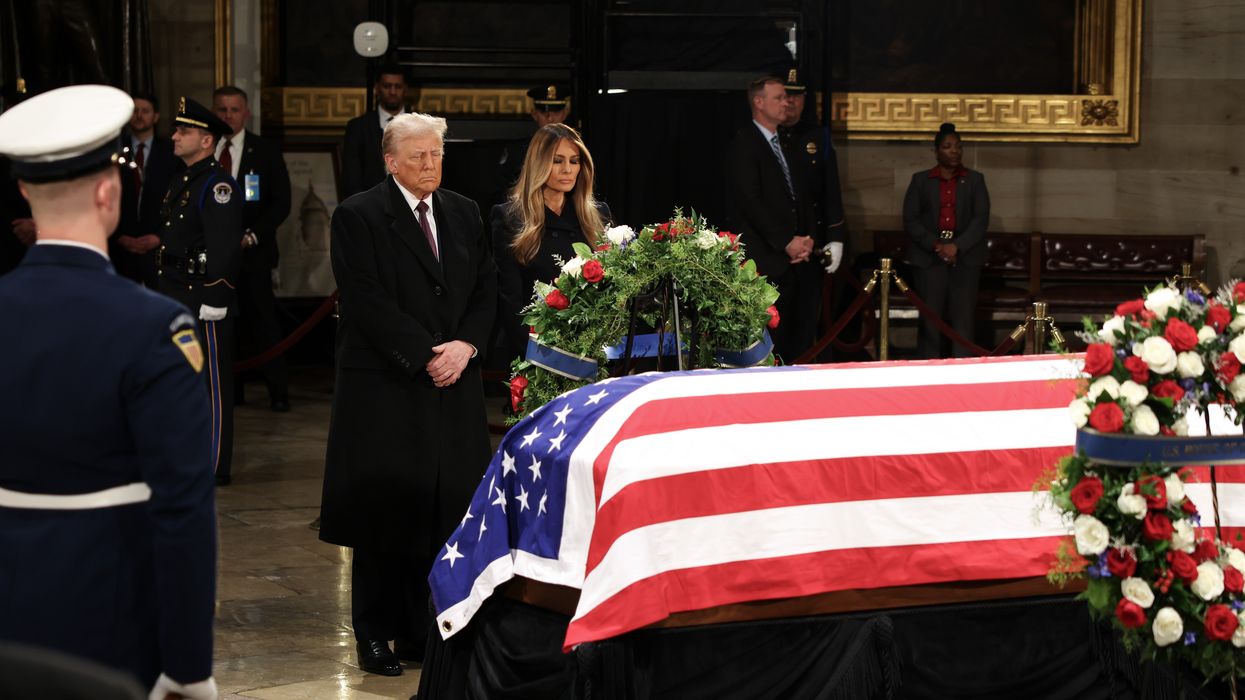Trump Orders US Military to Plan Invasion of Panama to Seize Canal: Report
U.S. officials familiar with the planning said options for "reclaiming" the vital waterway include close cooperation with Panama's military and, absent that, possible war.
President Donald Trump has directed the Pentagon to prepare plans for carrying out his threat to "take back" the Panama Canal, including by military force if needed, two U.S. officials familiar with the situation told NBC News Thursday.
According to the outlet, the officials said that U.S. Southern Command (SOUTHCOM) is drawing up potential plans that run the gamut from working more closely with Panama's military to a less likely scenario in which U.S. troops invade the country and take the canal by force. They also said that SOUTHCOM commander Adm. Alvin Holsey has presented draft strategies to be reviewed by U.S. Defense Secretary Pete Hegseth, who is scheduled to visit Panama next month.
The officials explained that the likelihood of a U.S invasion depended on the level of cooperation shown by the Panamanian military.
Trump has repeatedly refused to rule out use of military force to seize control of the vital U.S.-built waterway, as well as Greenland, an autonomous territory of NATO ally Denmark.
Last week during his joint address to Congress, Trump proclaimed that "to further enhance our national security, my administration will be reclaiming the Panama Canal," but his administration has not clarified precisely what "reclaiming" entails.
The Republican president says the U.S. needs to retake control of the Panama Canal to enhance "economic security," and has falsely claimed that the waterway is "operated by China."
Earlier this month, the New York-based investment firm BlackRock led a group of investors in a $23 billion deal to purchase ports at both ends of the Panama Canal from a Hong Kong-based conglomerate, an agreement Trump dubiously seized upon as proof that "we've already started" reclaiming the conduit.
Panamanian President José Raúl Molina countered that "the Panama Canal is not in the process of being reclaimed... The canal is Panamanian and will continue to be Panamanian!"
The U.S. controlled what was formerly called the Panama Canal Zone from the time of the waterway's construction in the early 20th century—largely done by Afro-Caribbean workers, thousands of whom died in what's widely known as the world's deadliest construction project—until then-President Jimmy Carter transferred sovereignty to Panama in the late 1970s. Under the Torrijos-Carter treaties, the U.S. reserves the right to use military force to defend the canal's neutrality.
The United States has repeatedly used deadly military force in Panama over the decades, including during a 1964 student-led uprising against American control in which 22 Panamanians and four U.S. soldiers were killed, and in a full-scale invasion in 1989 ordered by then-President George H.W. Bush to capture erstwhile ally and CIA asset turned narcotrafficking dictator Manuel Noriega. The U.S. invaders killed hundreds of Panamanians, including many civilians.
Writing for Americas Quarterly this week, Panamanian jurist Alonso E. Illueca argued that Panama's efforts to appease Trump aren't working. These include the BlackRock deal and other moves like quitting China's "Belt and Road" initiative, taking in third-country migrants deported by the U.S., backing a U.S. resolution on Ukraine at the United Nations Security Council, auditing the country's ports, and revisiting a railway project originally developed by the Chinese government.
"Panama should abandon its accommodating policy towards the U.S., which can only lead to escalating demands to banish Chinese influence, to the detriment of Panama's national sovereignty," Illueca asserted.
"An alternative policy for Panama is to align with the rules based international order," he continued. "This includes establishing synergies with like-minded states which have been also affected by U.S. actions such as Canada, Mexico, Greenland, and Denmark. The country should seek to transcend the U.S.-China binary and find alternatives for alliances, which should include partners like the European Union."
"In short," Illueca added, "the way forward for Panama lies in replacing strategic dissonance with strategic clarity."


